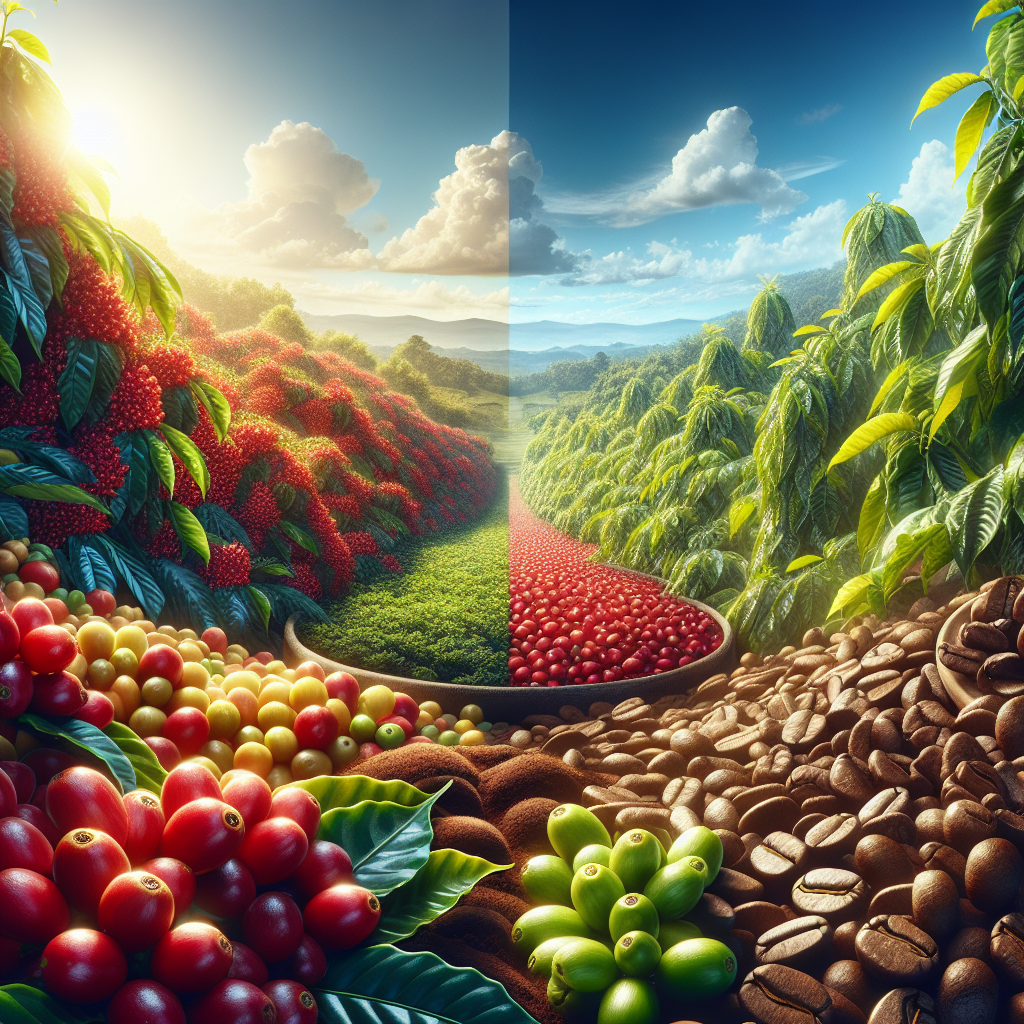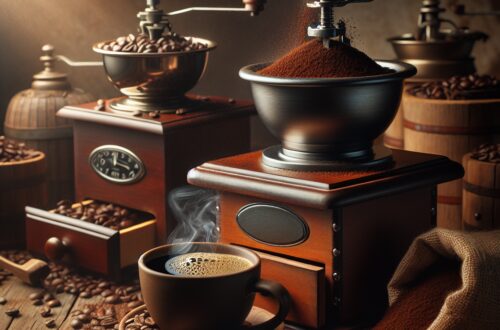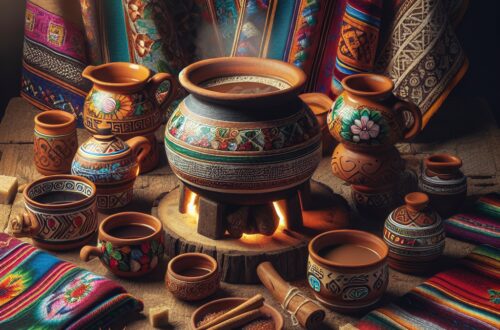“`html
Arabica vs. Robusta: Understanding the Differences
Comparison of Arabica and Robusta Coffee Beans
As coffee aficionados, it’s crucial to understand the key distinctions between Arabica and Robusta beans. This knowledge not only enhances your appreciation of coffee but also guides you in selecting the perfect brew for your taste preferences.
Shape and Size of Coffee Beans
| Attribute | Arabica | Robusta |
|---|---|---|
| Shape | Elongated, Oval | Round, Smaller |
| Size | Larger Beans | Smaller Beans |
| Reflection of Variety | Yes, reflects Arabica variety | Yes, reflects Robusta variety |
| Impact on Roasting | Different roasting behavior | Different roasting behavior |
Taste Profiling
Arabica beans are renowned for their smooth, sweet, and aromatic flavor profile, often presenting fruity or zesty notes. Conversely, Robusta beans are known for their stronger, more bitter taste with earthy and nutty undertones. While Arabica is often preferred for its palatable flavor, some coffee enthusiasts appreciate Robusta’s robustness, especially in espresso blends.
Caffeine Content
When it comes to caffeine content, Robusta beans outshine Arabica. Arabica beans typically contain about 1.5% caffeine, whereas Robusta beans can have as much as 2.5%. This higher caffeine content contributes to Robusta’s bitter taste and makes it a popular choice for those seeking a stronger coffee experience.
Growing Conditions
The growing conditions for Arabica and Robusta beans are significantly different. Arabica coffee plants flourish at higher altitudes (between 3,000 and 6,000 feet) and require a cooler climate to develop their rich flavors. In contrast, Robusta plants are hardier, tolerating lower altitudes and harsher conditions, which allow for more extensive cultivation across various climates.
Oil Content and Aroma
Arabica beans are richer in oil content, contributing to their aromatic qualities and fuller flavor. On the other hand, Robusta beans tend to have a drier surface and lower oil content, impacting their aromatic profile. This difference plays a crucial role in the overall coffee experience, influencing both flavor and aroma.
Production Statistics and Market Price
Arabica coffee dominates the global market, accounting for approximately 75-80% of coffee production. The superior flavor profile and higher consumer demand make Arabica more expensive, while Robusta, which represents 20-25% of production, is often used in less costly products like instant coffee and espresso blends.
Resistance to Pests and Diseases
Robusta coffee plants are generally more resilient and resistant to pests and diseases compared to their Arabica counterparts. This hardiness makes Robusta easier and more economical to cultivate, especially in regions prone to agricultural threats. However, the delicate nature of Arabica requires more careful management to maintain plant health and yield.
Appearance During Roasting
During roasting, the differences between Arabica and Robusta beans become evident. Arabica beans develop a more pronounced, uneven s-shaped groove, known as the center cut, which affects the roasting behavior and flavor development. In contrast, Robusta’s center cut remains straight, resulting in a different roasting profile.
Market Price
The perceived superior flavor and quality of Arabica coffee command a higher market price compared to Robusta. This economic distinction influences growers’ choices, with many favoring Arabica cultivation for its higher profitability despite the more demanding growing conditions.
If you’re eager to explore more about coffee, its variations, and cultivation, we invite you to dive deeper into our comprehensive Coffee FAQ section here.
Conclusion
Understanding the differences between Arabica and Robusta coffee beans enhances your coffee knowledge and helps you make informed choices based on your taste preferences. Arabica beans offer a smoother, more aromatic experience, while Robusta provides a stronger, caffeine-rich brew. Each variety has its unique attributes, growing conditions, and market appeal, catering to diverse consumer tastes and requirements.
Embark on a journey through the world of coffee, and discover the myriad of flavors and aromas that await. For more insights into coffee cultivation, roasting, and tasting, explore our other blog articles and resources.
“`
Shop at Breville now!
https://breville.oie8.net/oqDqrE
Shop Coffee Machine at Amazon now!
Click here!





